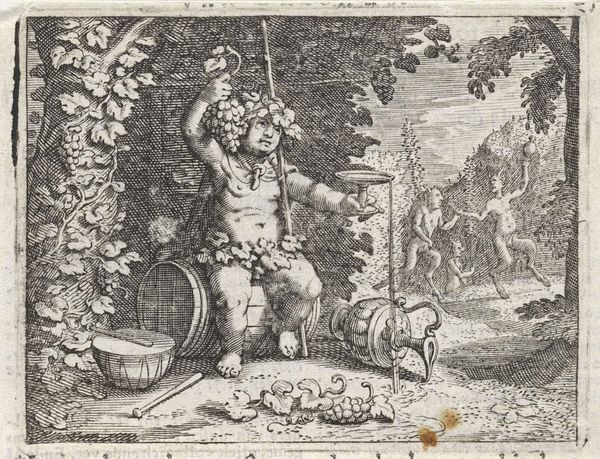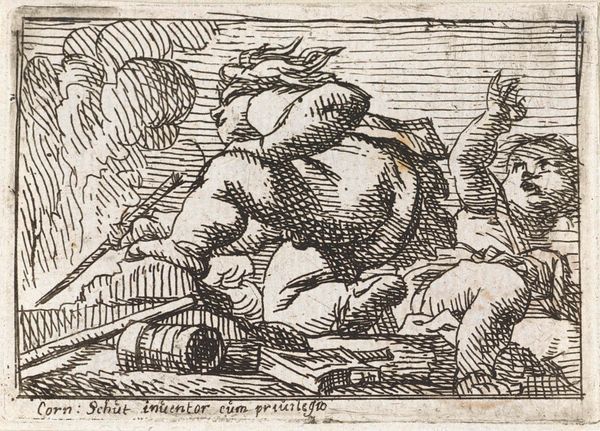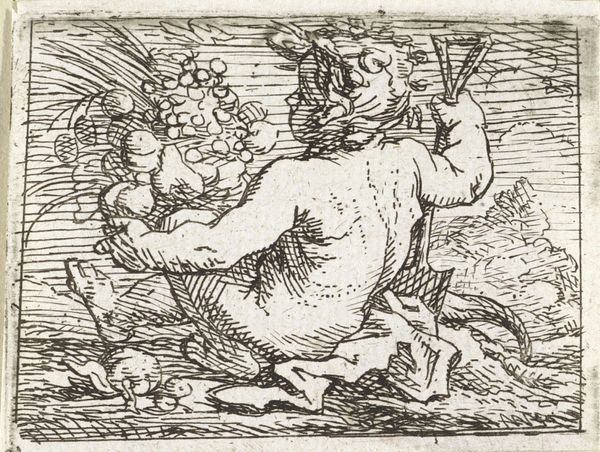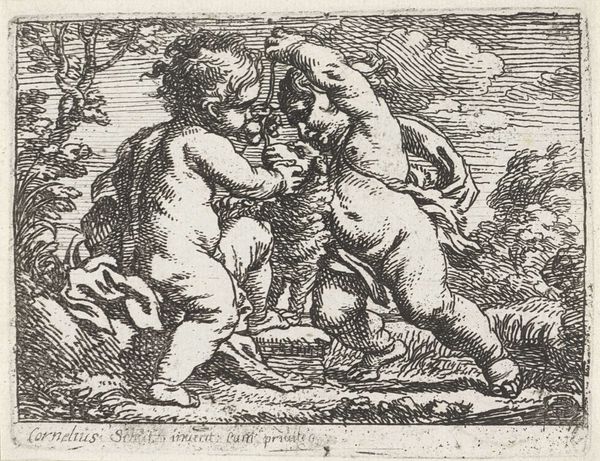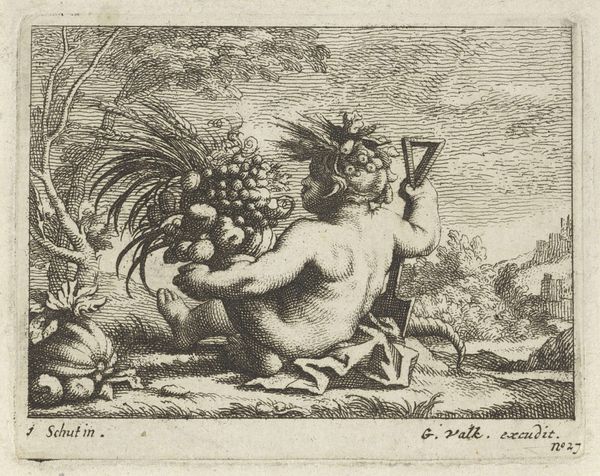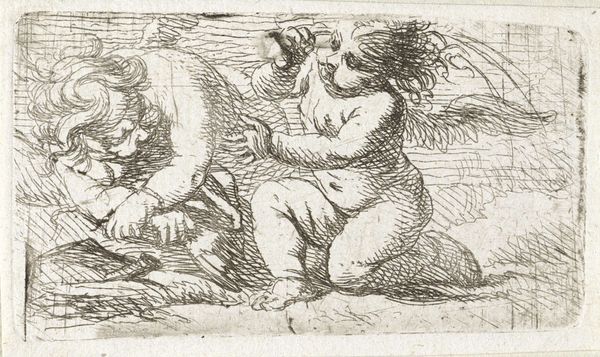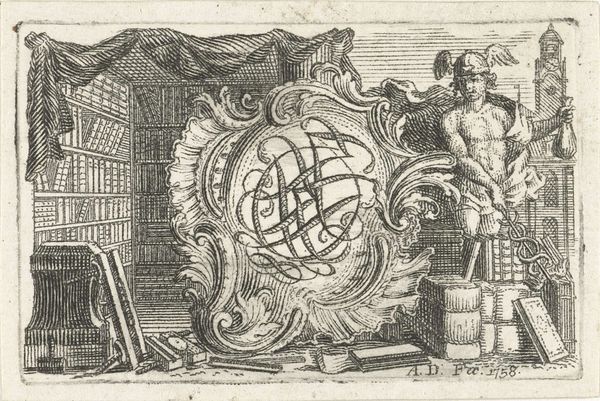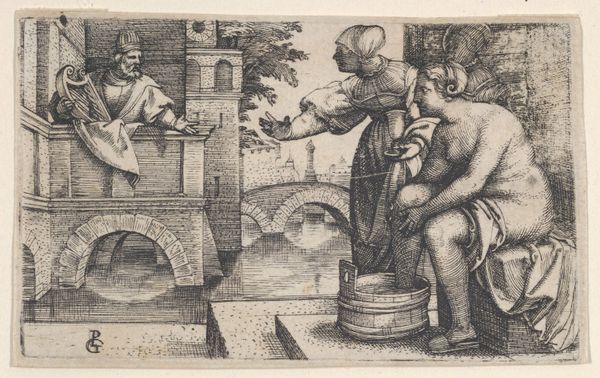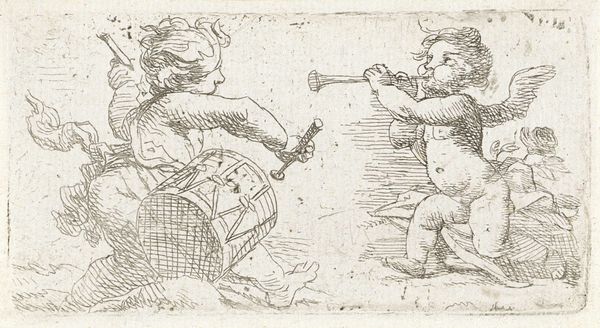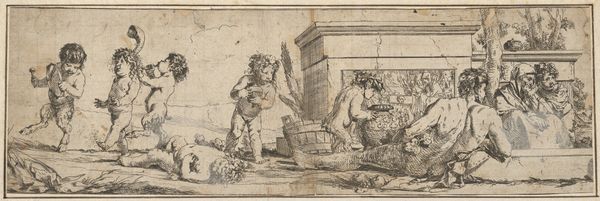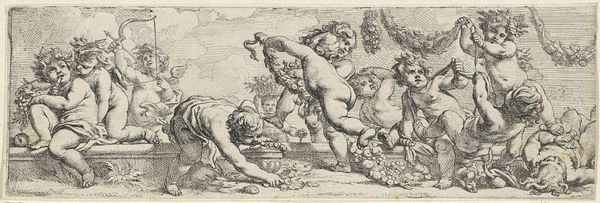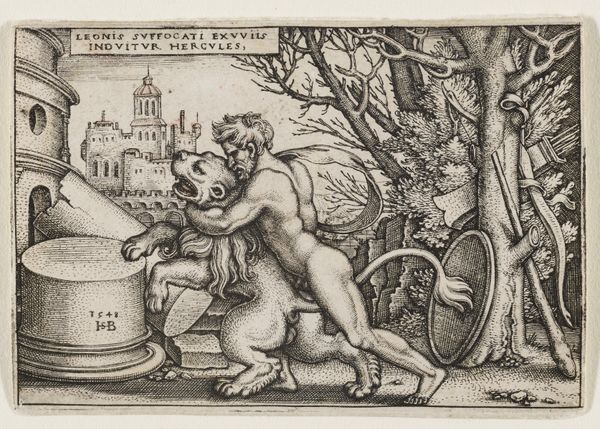
Dimensions: height 73 mm, width 100 mm
Copyright: Rijks Museum: Open Domain
Editor: We're looking at "Two Children by a Wine Barrel" by Cornelis Schut, made sometime between 1618 and 1655. It's currently at the Rijksmuseum. It’s got this really energetic feeling, a lot of movement even though it's just an etching. What's your interpretation of this piece? Curator: This print really speaks to the intersection of class, labor, and childhood innocence. The cherubic figures are engaging with the wine barrel, which could be viewed as a commentary on the accessibility, or lack thereof, of luxury items for the working class. Consider the social hierarchy of the time; do these children represent privilege, or are they an idealized image of labor? Editor: I hadn't thought about it like that, seeing it as more of a carefree, jovial scene. Curator: Exactly! But where does that 'carefree' feeling come from? The composition, with its emphasis on natural abundance – the grapes, the overflowing barrel – evokes a sense of harvest and plenty. Yet, who benefits from that plenty? Who is allowed to partake in it freely? And are the children participating in production or consumption here? Editor: So, you’re saying it’s not just a happy picture, but one that hints at the larger system at play? It brings to mind contemporary debates around child labor, but reframed within the art and culture of 17th century Netherlands. Curator: Precisely. And consider, too, that wine was not merely a beverage; it was a status symbol, tied to power and wealth. These children and their interactions, then, may subtly critique access and power during a particular historical moment. It may not be overtly political, but art always occurs within a social framework, even if just documenting everyday interactions and common luxury items. Editor: That’s really changed how I see it. Now it feels less idyllic and more like a loaded representation of society's structure. Curator: Art challenges our preconceptions and encourages questioning dominant narratives. What was your key takeaway from today's conversation? Editor: That beauty is a tool to tell a more complicated story! Thanks for your expertise.
Comments
No comments
Be the first to comment and join the conversation on the ultimate creative platform.
